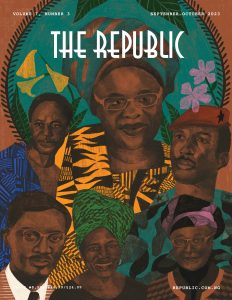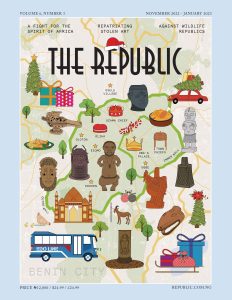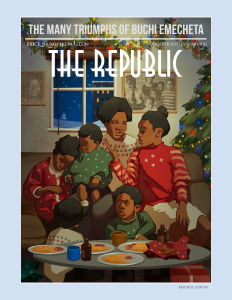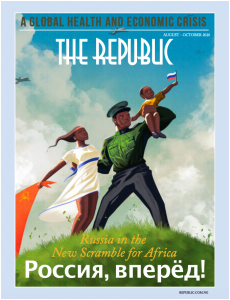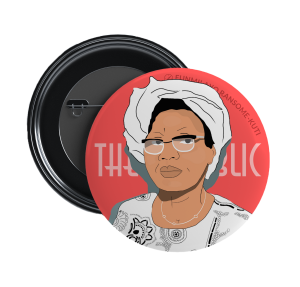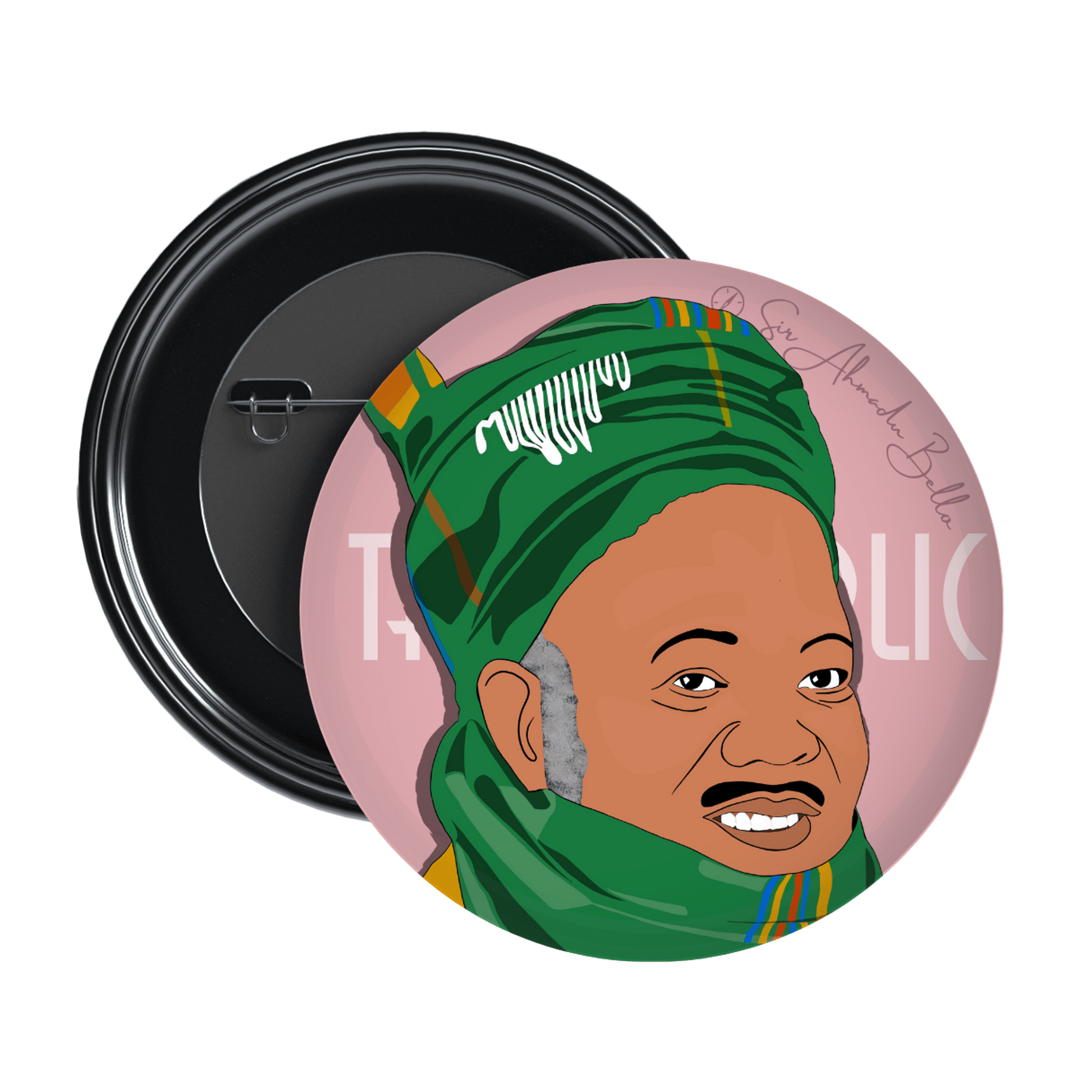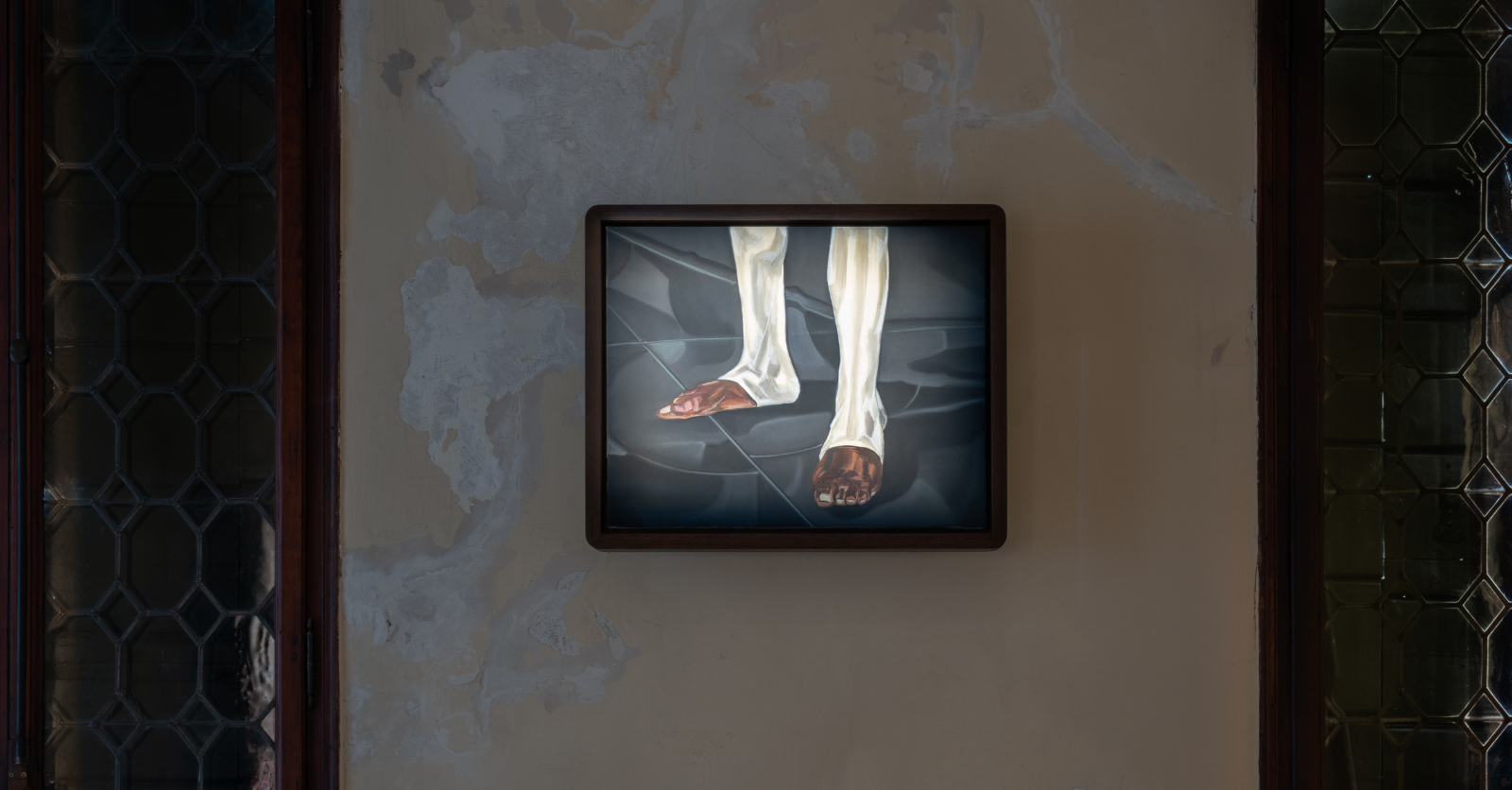
Toyin Ojih Odutola, Ààlà (Accidental Boundary), 2022-2023. Installation view, Nigeria Imaginary at the Nigeria Pavilion at the 60th International Art Exhibition — La Biennale di Venezia. MARCO CAPPELLETI STUDIO / MUSEUM OF WEST AFRICAN ART (MOWAA).
THE MINISTRY OF ARTS / VISUAL ART DEPT.
Toyin Ojih Odutola’s Theories of Place

Toyin Ojih Odutola, Ààlà (Accidental Boundary), 2022-2023. Installation view, Nigeria Imaginary at the Nigeria Pavilion at the 60th International Art Exhibition — La Biennale di Venezia. MARCO CAPPELLETI STUDIO / MUSEUM OF WEST AFRICAN ART (MOWAA).
THE MINISTRY OF ARTS / VISUAL ART DEPT.
Toyin Ojih Odutola’s Theories of Place
Almost a decade after its first national pavilion debuted at the Venice Biennale, Nigeria returns with an ambitious eight-artist showcase. The pavilion, smart in its use of the ground space, ceiling and walls of a semi-restored Palazzo, creates new context within which we might reassess the Nigerian artefact: damaged, trafficked, or lost to the ferment of history. Replicas of stolen art coexist with sound installations that feature verse form or memoir-style narratives from poets and writers. These share space with found colonial objects, photographs of protest, imaged machinery used for exploitation and futuristic sculptures. The effect, altogether, may not be restorative—it’ll take more than two pavilions to fix history—but it amounts to a compelling start.
The appraisal of Nigerian art within the global art space has a fraught history. In a 1996 Glendora Review issue, concerned about the necessary and lopsided concessions that can become a requirement when the West shows aesthetic or acquisitive interests in the self-enunciation of the other, the curator and art historian, Chika Okeke-Agulu, questioned the reliance of art communities on this unequal union. In the decades since, depending on who you ask, it is doubtful that this relationship has become any less mystifying or that the West’s fixation with apprehending the other on its own predetermined terms has changed significantly.
For some participating countries at the Venice Biennale, the process of putting together a pavilion and selecting representative artists, influenced by controlling interests or government, reflect larger political issues or stifle creative expression and freedom. For Nigeria, a pavilion in Venice as a vehicle for national mythmaking will raise the perennial questions: who gets to make the definitive art that represents a country and what kind of geographical investment qualifies a person for the job? And if the representative artist is exiled, diasporic or of dual nationalities, it comes down to this: who has the right to yearn for a place, what place, and with what qualifications? This year, in a triumph of curatorial vision, private funding and government support, the Nigeria Pavilion faces these concerns head-on. The exhibition, put together by the British-Nigerian-British curator, Aindrea Emelife, and organized by the Museum of West African Art (MOWAA), commissioned by the government of Edo State, brings together artists who are diverse in their styles, influences, affiliations with place, and interpretations of nationhood and history.
Among them is Toyin Ojih Odutola, the Ife-born, New York-based artist, whose artistic instincts already bypass easy conceptions of place, belonging and history as questions of physical location, duration of stay, and documentation. She invites us to zoom far outside of these limiting margins to think of a city, any city at all, as place of birth, and its iconographies as ours. The lanyards by which our means of identification hang, and the fixed or changeable information contained with them as connectors to place are variable. This data, along with identifiers like skin colour and hair type, might become the rigid frameworks by which we are defined within the nation-state. And they are useful data. But for the artist, they serve only as a necessary backdrop for the more compelling and urgent matter of personal history.
ESTABLISHING THE PLOT
Ojih Odutola is drawn to structure and plot but as artifice. A way to loosely define the borders of reality. Where the focus is family lore, structure for the artist offers containment for the thousand mutinous interior lives of her subjects. Housed, the people in her canvases roam the rooms of homes where they live or visit. They loiter in its corner spaces or walk the halls and grounds of these abodes, having ventured toward solitude or privacy, however fleeting. To borrow a line from the poet, E.J. Koh, ‘they wander…numerously.’
Where the focus shifts to landscape or place, what is serious, what the people in the drawings must negotiate in their daily lives, are not necessarily wall art or the specific vegetation or grey wasps and pale newts that form their ecosystem. These are not always absolutes or formative. In consideration of the objects that surround her subjects, objects or status props that might offer some clue into who they are, the artist may concede on fabric colour and pattern, or place in our sightlines a single leaf hiding in plain sight, tattooed into the skin of her subject. But the room itself will occasionally be bland. It could be any room any place.
What the artist chooses to foreground, blur, render as distinct parts, or layer over are irreducible parts of a whole. She maps what she wants to be visible about biography or landscape onto the skins of her subjects. Impossible acts of superimposition by an artist whose tools are the ballpoint pen, sharpies, graphite, colour crayon, and charcoal, worked into a sinuous surface. At certain angles, this surface might look braided and at other angles, it will look underlit by a molten core. In choosing the ballpoint pen as overlay for this restless surface, the artist has thought about this duality. What she wants us to see is ‘the magic of viscous fluid’ at work. The way that it might trick the eyes, so that ‘the darkest areas, the relief-like marks, also become the lightest areas by simply changing one’s point of view,’ she told Bomb Magazine in a 2015 interview.
Ojih Odutola thinks of the subject of a drawing as inclusive of the materials that make the drawing and has said in the past that the real subject of her work is the material and the mark-making she does. ‘The subjects are containers of these multitudes of marks and landscapes and colors,’ she notes. They, themselves, are no more real than the words that identify us on a paper ID card. They are planar surfaces on which the imagination of the artist can get to work unrestricted by ‘social code, aesthetic rule or formal standard.’ And we are invited into these conditions created by the artist to (her words) lose ourselves. Here, before the work, we are given infinite time and space to think. The notion of the material as made strange by the imagination of the artist so that it can transcend its banal appearance and realize its essence came to Ojih Odutola by way of the British painter and master of portraiture, Lucian Freud.
An encounter with a 1985 self-portrait of Freud made her go, ‘Dude, I’m a painter.’ An epiphanic moment that led the artist to reconsider the tools at her disposal as urgent mediums by which her subjects would be realized. She went to work with the focus of an archer, chasing not quite the authentic image of the immigrant in-betweener defined by their roots and dislocation and ailments. True, her subjects embody these things. But what they contain are conditions that are harder to pinpoint: the expanses they have traversed, the mysteries of houses, the aboutness of places. They ‘wander determined.’ The plain subject represented without this necessary refraction is not the point for the artist. It’s more the alchemic charge that happens between the looking and the translation of what is seen that is reality.
THE ARTIST VERSUS THE IMAGINARY
It is fitting then that Ojih Odutola is one of eight artists drawn from Nigeria and its diaspora to show works as part of the Nigeria Pavilion at the 60th Venice Biennale under the theme, Nigeria Imaginary. For the Biennale, Ojih Odutola turns to the Mbari House, a historic centrepiece of Igbo culture and, in its modern usage, an incubator/conservatory in post-independence Nigeria, where vibrant salons were held by the Nigerian literati. In Igbo mythology, the Mbari House is a shrine gallery built to appease the primary deities of a pantheon. Ala being the highest Alusi (deity) in the Igbo pantheon, responsible for the earth, morality, fertility and creativity. The Mbari House is open-sided and square-shaped. Large enough to hold representational figures (often life-sized and painted) of minor and major deities, ancestors, creatures of legend, colonial actors within a community and animals within its structure. Ojih Odutola’s stated interest in the Mbari House is its place as a ‘center of creative exuberance in post-independence Nigeria.’ But both forms work as interpretations of the artist’s focus.
For the pavilion, Ojih Odutola envisions Ààlà’s (Ala’s) entry point into earth as through an accidental portal. Ojih Odutola’s earth is not quite the fixed plane where human life must unfold within an ecological environment and with contractual social systems. But a coincidence: any number of creation accidents or mischief may have led to the formation of this patch of land and portal. The artist measures time on a mythic scale and her heroes or representational figures are women from key events in recent history or mythology.
The main space imagined by Ojih Odutola and peopled with vivid and faded out forms made with pastel and charcoal on linen, is an Ilé Oriaku. A sacred, yet free zone structure, where gods and mortals might mingle. The name of this structure is itself a conjoining of the Yoruba word for house and the Igbo word for a woman who has chosen a life of pleasure. Some of the women here could very well be objects of worship. Others stand solitary and contemplative. But, in the spirit of the more modern Mbari Club, they are liberal, intertribal and, with good reason when the occasion demands it, anarchic.
The Nigeria imaginary as Emelife intends for us to think of it is an interpretative machine where the imagination, she tells ArtNews, is a ‘fertile and powerful tool of liberation. In the imaginary, we can dream but we can also reckon with ideas of utopia.’ In Ojih Odutola’s approach, the imaginary, populated with new ideologies and the restaging of social orders, is closer to Gilles Deleuze’s definition of an arena where ‘games of mirroring, of duplication, of reversed identification and projection’ can occur. You understand exactly what she gives us access to, and what becomes possible when the artist considers the historical material, folklore or mythologies.
Ojih Odutola’s imaginary, very like her women, commands attention. In figurations reminiscent of the illustrations from old edition novels of the Heinemann African Writers Series, with world-built details and topographies, the line marks in A Countervailing Theory tell a graphic history. The body of work, a product of the artist’s collaboration with the Barbican, has as its source material a series of ancient pictorial markings found on black shale rock in the mountains of Jos, Plateau. You feel in the drawings a parallel world. A duplicate earth and a Jos elsewhere, where the living happens just outside the borders of reality. In this Jos, alongside lived history, there are netherworlds within the rock formations with their own recorded history, evolutions, social systems, codes and deities. This world Ojih Odutola conjures is not some Mad Max: Fury Road fantasy/sci-fi society. The formal structure onto which the artist projects her imagination is, again, matrilineal. Female warriors, the Eshu, rule over the Koba, humanoid men manufactured to work in mines and cultivate food for their superiors. She renders a society that is tribal with distinctions between the fictional Koba and the Eshu, encoded using different line marks. Ojih Odutola places this imagined ancient civilization within a rocky terrain to situate them; and with a cast of characters, she tells the story of forbidden love, in which an enslaved Koba, Aldo, and a female leader of the Eshu, Akanke, must confront with truth the frames of their separate existences and one another.
The point of this exercise is a wild reimagining of the Black figure, at once an extension of the artist’s conception of the self within society and an embodiment of the Black body as something beyond the other. The figures are as the artist intends, ‘vulnerable yet dignified, strong as well as instantly fragile.’ (Think Africa Press, 2011). In a 2021 monograph, The UmuEze Amara Clan and the House of Obafemi, Ojih Odutola places her subjects, an aristocratic clan, within a landscape where they enact casual and eventful encounters. These encounters make concrete our imagination of them as familial and inevitable, impossible to imagine otherwise.
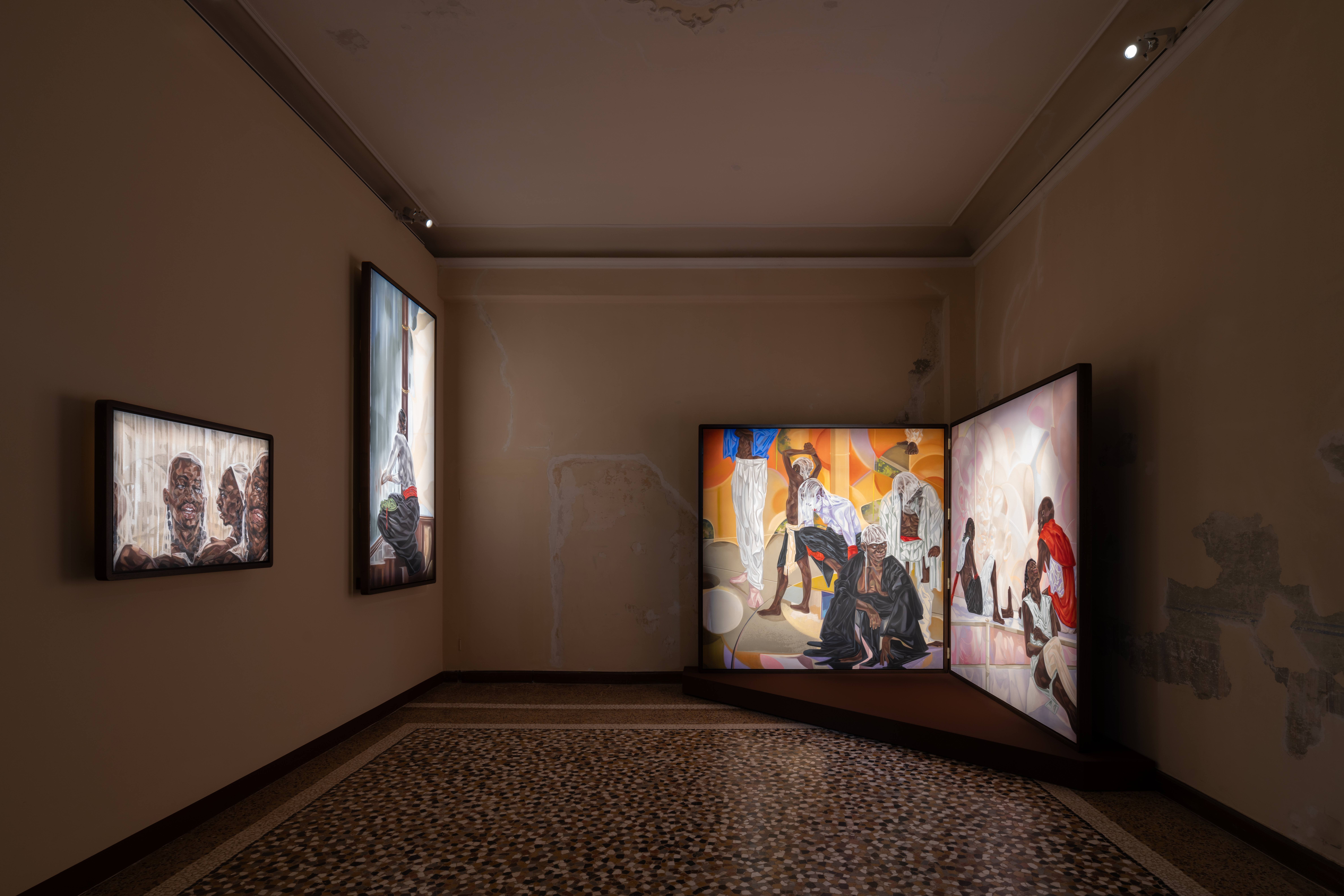
AGAINST THE SPECTACLE
Ojih Odutola’s interest in the performance of the self and the diasporic identity does its standalone work of creating useful counterpoints against the monotone register that works to render the group featureless. What people lose in the traversing of borders, Ojih Odutola’s drawings seek to give them back in space: every landscape, every house, tree, leaf; every exchanged glance between fellow traversers. This is all deliberate work for Ojih Odutola. With the eyes of her subjects, where they are visible for instance, she will render them as infinite portals. They look at the viewer depthless and lucid. The artist admits in conversation with the novelist, Zadie Smith, for The Drawing Center that she is really on a quest to make the eyes dance.
This investment in the subject makes Ojih Odutola hypervigilant to sentiment or lazy trope-making. She recalls, in the same conversation with Smith, a drawing she had decided to discard once. She had made a set of choices for the figure of this imagined woman seated in a room atilt within the frame, all of which felt wrong enough to send the drawing to the trash heap. It took the conviction of a clairvoyant stranger who visited her studio—although she does not accept studio visitors, and this was in fact a rare exception—for her to give the drawing a second chance. But looking again at the discarded work required a series of balancing acts and an impulse ‘to go ham.’ She went to work recreating this woman from the trash pile: now dressed in lush fabric, situated in a room filled with rich textures, acquired tastes and possession ‘happening into the picture’ as it were. All these choices, an embrace of muchness and colour, a pushback against the impulse to do the expected thing, a rejection of the subject as spectacle, and an opportunity to disorient the viewer. This is in the hope that we arrive at some different relationship between ourselves and the subject but primarily perhaps with ourselves.
The clairvoyant stranger who shows up at her studio is the American producer, Swizz Beatz. He retells the story of how this work, Paris Apartment, came to be included among his and musician, Alicia Keys’, private collection in a recent interview with the Brooklyn Museum. That this work now seems, to the viewer, predetermined and fixed, in its scale and detail, is what makes any ‘Toyin Ojih Odutola’ drawing necessary and timeless. Within the context of a Biennale and outside it. Every arrangement, as the artist states, existing as if it has never been questioned. Memory, presented as anatomical, with physical proof. A leaf tattoo, not an impulsive act of self-possession but proof of having lived somewhere, albeit accidental. Having seen and perceived any event in time and place, no matter how small or solitary.
shop the republic
ALL THAT WEIGHT OF HISTORY
For Ojih Odutola, the subject is personal. At the pavilion, her choice of subject matter, the stories she has chosen to highlight (the Aba Women’s War of 1929, for instance) and the people that congregate in Ilé Oriaku are a very specific address. The neo-imperial mind flattens people or histories who exist far outside its frames of reference. And just by the tilt of head that the artist assigns the subject, she reanimates and recontextualizes them. And this would be enough. But Ojih Odutola takes the interior lives of her subjects very seriously. She is responsible for their creation and the story of their creation to the point of minutiae. She does not speak for her subjects having been spoken for as an immigrant kid who moved from Ife to Berkeley and then to Alabama where she first began to realize this flattening that did not make room for such luxuries as personal history. It was in Alabama, for instance, that she first understood the erasure that broad identities allow. ‘I went from being just this Nigerian kid in Berkeley to being a Black kid in Alabama,’ she said in a 2014 interview with Modern Painters. ‘You start to realise, “Oh, I’m flattened. I’m not a whole person anymore.”’
In rejection of this flattening, Ojih Odutola will choose to place ‘people and things that might not fit together within her frame to induce in the viewers’ states of perception where we can imagine the subject as whole, complex and in flux. She said in Present Space, ‘The figures and scenes I like to draw have an unknown quality and momentum. Every picture is in the middle of some activity, even when they seem stationary or familiar.’
True, the drawings in her larger body of work and in the work she has showcased at the Biennale have a filmic sense to them that goes beyond Ojih Odutola’s capacity for visual storytelling. Her subjects are characterized by their states of motion or momentary stillness, paused by the draughtsman. There is some science to their velocities. It becomes necessary to think of their motions and positions within a continuum because Ojih Odutola invites us to think of them within the world of physical matter. A body paused or in motion as observed by the artist, and the subject of the drawing in turn simultaneously observing their material worlds, doing with their gazes what they want. The theory of relativity applies. They will move again and in doing so shift our perceptions of them.
The Uncertainty Principle (2014), made with charcoal, pastel, marker and graphite on paper embodies in a precise way this unknown, unknowable quality. Contained within a 30 x 40-inch canvas, the subject is at once still and not. It features a youngish person of uncertain gender. Possibly a composite persona of the artist or one of the artist’s brothers (they feature occasionally in her drawings). The Uncertainty Principle stretches Ojih Odutola’s notion of material to its ecstatic limits. The subject’s gaze is outside the frame and beyond the looker. The subject is here, there, everywhere and elsewhere.
In dialogue with her subjects, and occasionally herself as the subject or model of her drawing, Ojih Odutola initiates a kind of call and response or feedback loop, where the information synthesis actually works. In a series where the artist plays with the idea of identity by staging the self in different hairstyles and personas culled from old Facebook photos, the self-portraits reject identity as deterministic. The self is shown to us as a creature of heterodoxy. This is promissory. On the one hand, we might yet create a less violent state that reflects this dreamy complexity back to us. On the other hand, we realize and accept in total that the state has failed and cannot in its current formulation imagine the Black figure outside of its deterministic frames.
Within the context of the Biennale, Ojih Odutola’s probing of space, bodies in motion, and containments, extends. Place becomes, more than a means of homing the body, a way to reimagine and contain evolutionary history or myths of creation. In this regard, Ojih Odutola shares common ground with Fatimah Tuggar, also a part of the showcase, whose Tubali architectural façades and calabash animatronic sculptures, reanimate the lived-in space. Both artists ask: how much telling can a striation, line mark or wooden fragment do? How much of history can they contain/preserve? To work one’s way through Ojih Odutola’s works and through Yinka Shonibare’s monument or Tuggar’s motive calabashes or Precious Okoyomon’s sound installation intimating passersby with bits of lived experience, is to inhabit, for a time, necessary sensoria. Within that space, it is possible, perhaps, to sense the scale of what has been forcibly erased by colonial history or the brute necessities that building empires demand⎈
shop the republic
BUY THE MAGAZINE AND/OR THE COVER
-
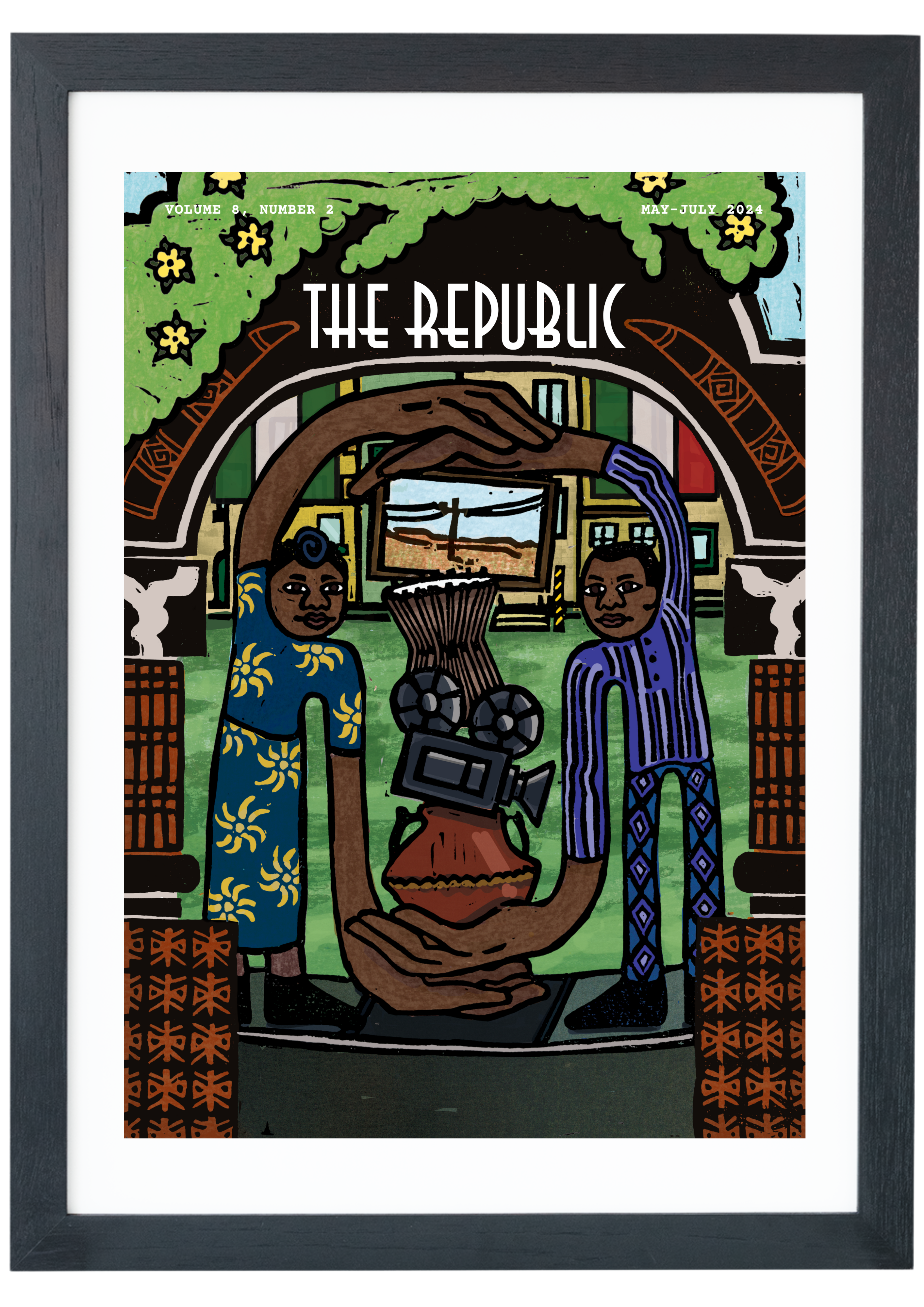 ₦140,000.00 – ₦150,000.00Select options This product has multiple variants. The options may be chosen on the product page
₦140,000.00 – ₦150,000.00Select options This product has multiple variants. The options may be chosen on the product page -
 ₦10,000.00 – ₦30,000.00Select options This product has multiple variants. The options may be chosen on the product page
₦10,000.00 – ₦30,000.00Select options This product has multiple variants. The options may be chosen on the product page




